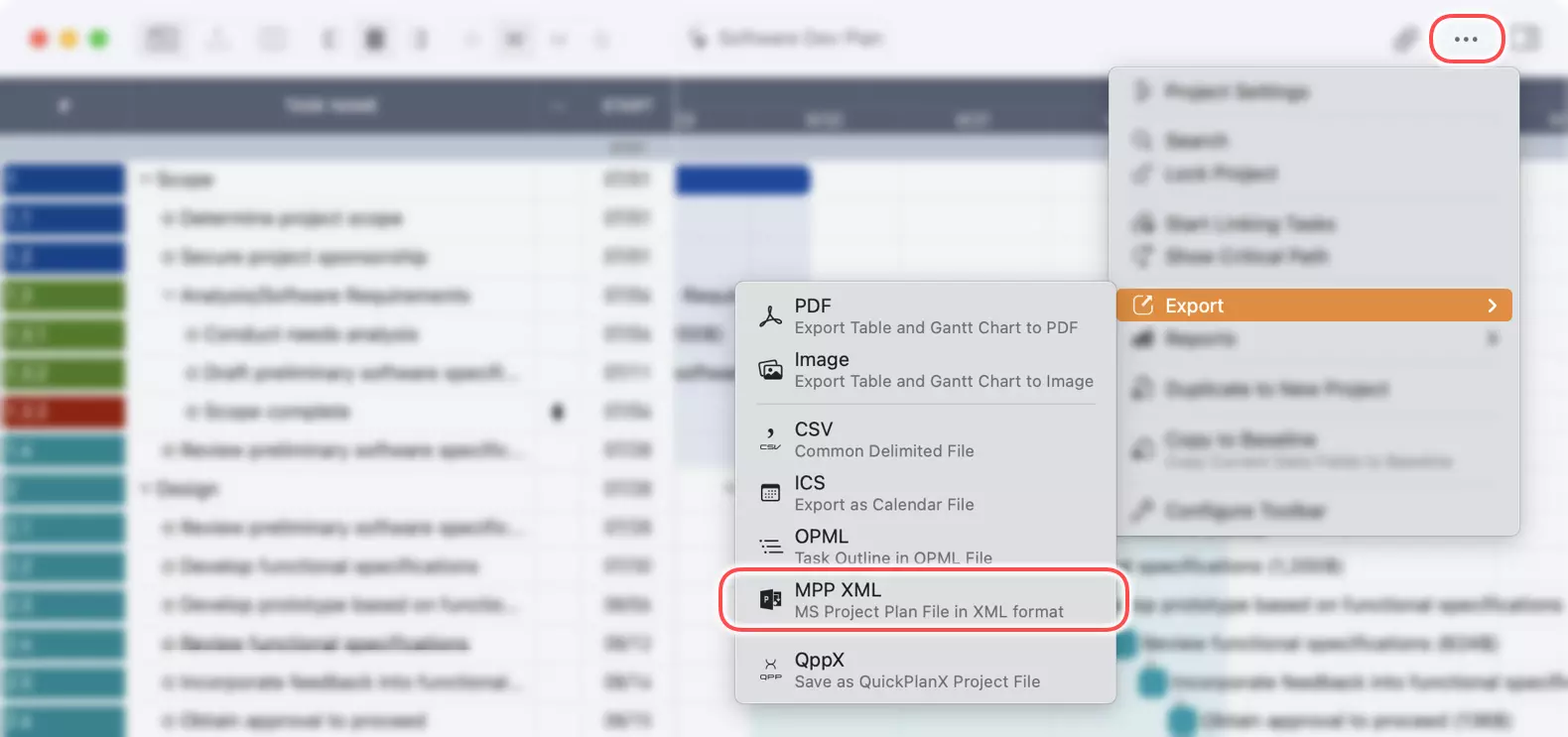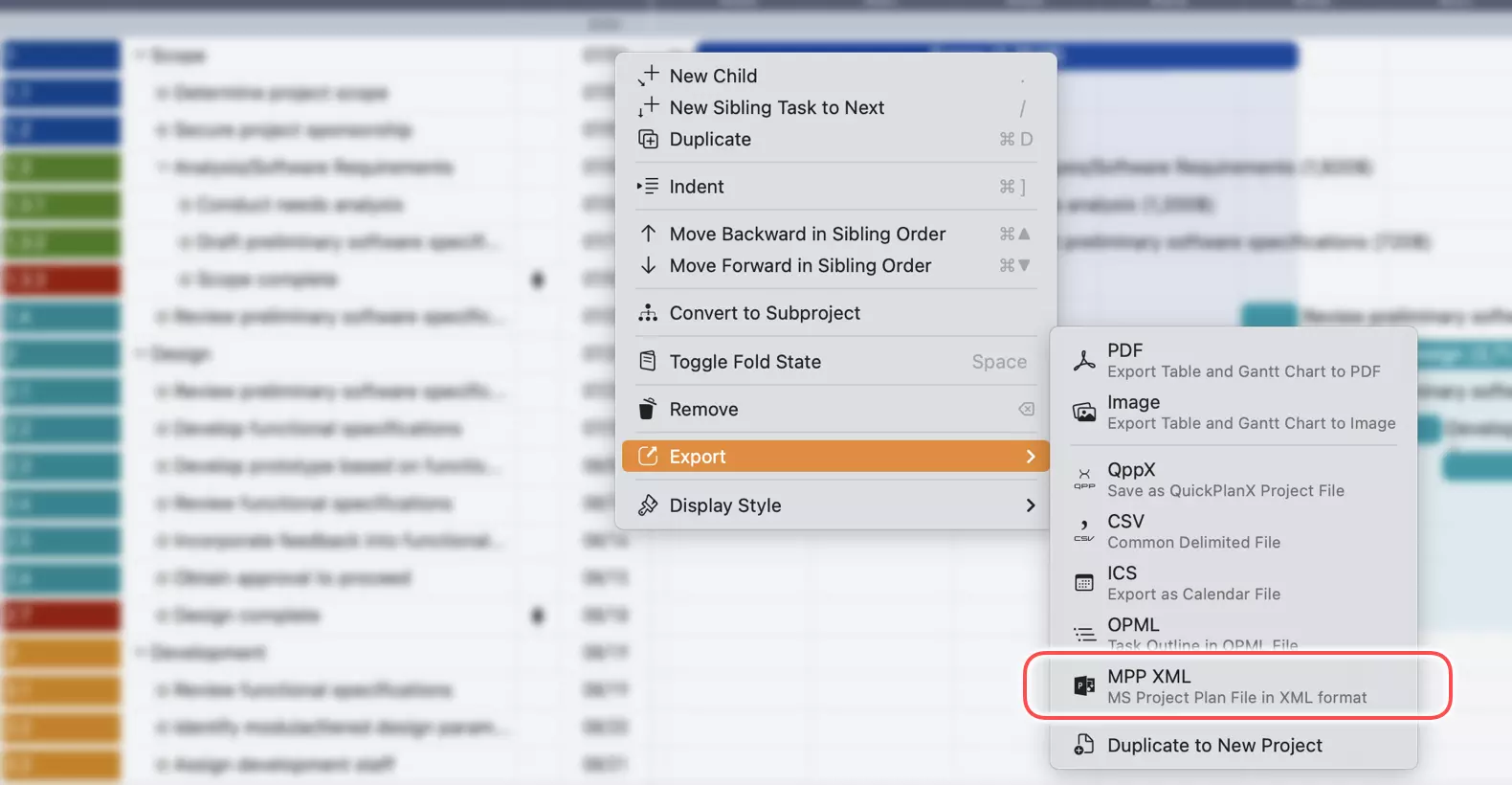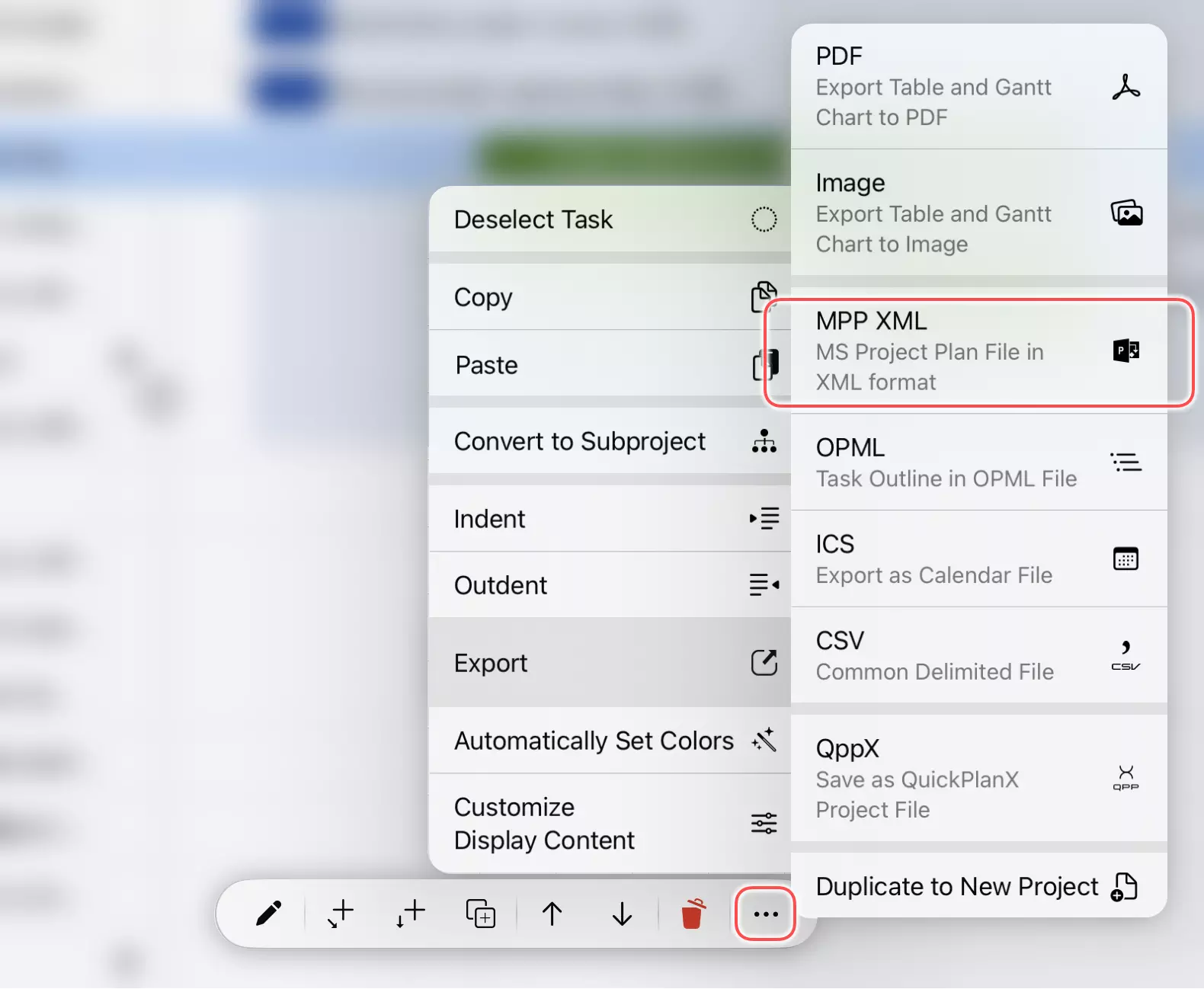Microsoft Project Integration
QuickPlanX provides seamless integration with Microsoft Project through XML file exchange. You can export your QuickPlanX projects to Microsoft Project XML format (.xml), which can be opened directly in Microsoft Project. Similarly, you can import Microsoft Project XML files into QuickPlanX to create new projects.
Exporting to Microsoft Project XML
QuickPlanX offers the flexibility to export either your entire project or specific branches (task groups with their sub-tasks) to Microsoft Project XML format.
Exporting the Entire Project
On macOS
- Within your project, tap the
···button in the toolbar - Select
Export→MPP XMLfrom the menu options

Exporting a Specific Branch
You can export any task group along with all its sub-tasks by selecting it first.
On macOS
- In the project outline view, right-click (or Ctrl + click) on the task group you want to export
- Select
Export→MPP XMLfrom the context menu
This exports the selected task group and all of its sub-tasks.

On iOS/iPadOS
- In the project outline view, tap to select the task group you want to export
- Tap the
···button on the bottom toolbar to open the context menu - Select
Export→MPP XMLfrom the menu options
This exports the selected task group and all of its sub-tasks.

Saving the Export
After selecting the export option, QuickPlanX will process your project data and prompt you to save the XML file to your desired location.
Tap the Save button to save the XML file to your device.
Opening the XML File in Microsoft Project
The exported XML file can be opened directly in Microsoft Project. For detailed instructions, please refer to Microsoft's official documentation: Saving and Opening Projects in XML Format.
Importing from Microsoft Project
Exporting from Microsoft Project
To prepare a Microsoft Project file for import into QuickPlanX, you'll need to save it as an XML file. For step-by-step instructions, please refer to Microsoft's official guide: Saving and Opening Projects in XML Format.
Importing into QuickPlanX
QuickPlanX can create new projects by importing Microsoft Project XML files. For detailed instructions on the import process, see the Create Project documentation.
Notes
Data Fidelity and Limitations
QuickPlanX is an independent application, not a clone of Microsoft Project for Apple platforms. While both applications serve project management needs, their feature sets and internal data structures differ. Consequently, data exchange via XML may not transfer all details perfectly. Information unique to QuickPlanX, such as custom display attributes (colors, icons), budget details, and attached photos, may be lost during the export process.
Compatibility with Third-Party Apps
The primary goal of this feature is to provide seamless integration with Microsoft Project, which is a widely-used industry benchmark.
It's important to understand that there is no universal standard for project planning itself. Different applications often use different data structures and support different feature sets. For example, how one app handles resources, costs, or custom fields may not have a direct equivalent in another.

Because of these underlying differences in the project model, simply converting a file format is not enough to guarantee a perfect transfer of data. QuickPlanX is designed to align with the core data structure and features of Microsoft Project. Therefore, we cannot guarantee compatibility with files from other third-party applications, as they may contain data or structures that QuickPlanX cannot interpret.
If you need to import data from another application, we recommend using Microsoft Project as an intermediary. Since most project management tools aim for compatibility with Microsoft Project, you can typically:
- Open the third-party XML file in Microsoft Project.
- Save the project as a new XML file from Microsoft Project. This process reformats the data into a structure that QuickPlanX can reliably interpret.